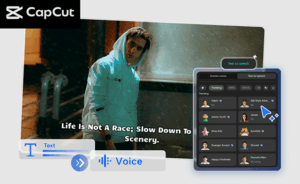Effective Social Media Strategies for Non-Profit Organizations

Ever wondered how non-profit organizations can stand out in the crowded sphere of social media? It certainly may seem daunting, but hey, aren’t challenges the stepping stones toward growth? With this in mind, let’s embark together on an insightful journey towards mastering tailor-made social media strategies, aiming to bolster engagement and visibility for non-profit organizations.
- Do you want to create a compelling voice for your organization?
- Are you seeking the key to better engagement with your audience?
- Or, do you want to take full advantage of social media’s potential to expand your organization’s reach?
Learning the right strategies can transform your organization’s social media presence from simply existing to thriving!
It can seem like a tough nut to crack, but we are here for you. Throughout this article, we will take you by the hand, exploring doable strategies to aid your non-profit in emerging as a true social media victor. Be it Facebook, Instagram, Twitter, or LinkedIn, every platform holds great potential, and we will unlock it together. It’s time to dive in!
Targeting the Right Audience on Social Media
Finding and reaching the ideal audience for your non-profit on social media is a critical aspect of your strategy. It’s more effective to communicate with those who are already interested and engaged in your cause, rather than casting a wide, generic net.
Conducting audience research should be your first step. Look into the demographic, psychographic, and behavioral characteristics of your potential supporters. Begin by studying your followers—those who like, share, comment, and engage. What are their commonalities? Is there a specific age group or geographical region that you tend to attract more?
Once you gain a deeper understanding of your current followers, you can build a comprehensive “supporter persona” to guide your content creation and overall strategy. Remember to use this persona as a flexible framework rather than a fixed formula, as your audience might evolve over time due to various factors.
Take advantage of social media analytics tools to track your engagement metrics. Facebook Insights, Twitter Analytics, and LinkedIn Page Analytics are just a few examples of native tools that can provide valuable data about your audience. You can also use third-party tools like Hootsuite, Buffer, or Sprout Social for more comprehensive insights.
Always keep communication lines open and engage in genuine interactions. Reply to comments, participate in relevant discussions and active hashtags, and create content that encourages conversation. This will not only maintain your current followers but also attract new ones who share similar interests or values.
Mastering the Art of Social Media Fundraising
It’s clear to all that fundraising is an essential element for any non-profit. But how can you harness the power of social media to foster it? Let’s explore.
Perhaps the most powerful tool in your arsenal is storytelling. Social media offers an ideal platform to share emotional, inspiring stories that drive people to action. Authentic stories about the people you help or the impact your organization has can work wonders. If they’re captured or narrated in a compelling way, they can motivate followers to contribute to your cause. Remember, a picture is worth a thousand words, and a video might just be worth a million. Use rich media like images and videos to make your stories more vivid and moving.
Secondly, make sure to keep a clear call to action (CTA) in your fundraising messages. Your supporters need to know exactly how they can contribute, whether that’s by donating money, sharing your post, signing your petition, or even volunteering their time. A clear, persuasive CTA can dramatically increase engagement and hence, success of your fundraising efforts.
Furthermore, consider partnering with influencers or other organizations. Online collaborations can expand your reach and bring in donations from novel sources. A respected influencer advocating for your cause can motivate their followers to donate, especially if the partnership includes a matching donation or challenge that creates a sense of urgency and impact.
In order to be successful in social media fundraising, you should also consider each platform’s unique features and audience. Innovative functions such as Facebook’s “Donate Now” button or Instagram’s donation sticker can simplify the donation process and make it more appealing.
Last but not least, don’t forget to thank your donors. Public recognition on social media not only makes donors feel appreciated, but it also encourages others to give. Everyone likes to be appreciated, and a simple public ‘thank you’ acknowledges their contribution while encouraging others to do the same.
In conclusion, mastering the art of social media fundraising can streamline and amplify your non-profit’s fundraising efforts. It demands creativity, authenticity, and strategic partnerships, but the payoff can be significant.
Building a Strong Online Community for Your Non-Profit
Creating a robust online community for your non-profit is an absolute game-changer. It’s not only about garnering likes and shares but about fostering a platform that encourages ongoing interactions, sharing ideas, and mutual support amongst your audience.
Your community is your strongest alley. They are the ones who not only follow your work closely but are also your active supporters and advocates who can help amplify your messaging. It’s crucial that you nurture this relationship effectively. Let’s look at some strategies you can adapt for building a strong online community.
1. Provide Value through Content
Offer value to your audience by posting informative and engaging content relevant to your cause. It could be anything from success stories of your initiatives, behind-the-scenes snapshots, updates on your current projects, or even thought-provoking articles related to your cause. This ‘added value’ will keep your audience interested and coming back for more. Remember, your content should inspire conversations and interactions.
2. Encourage User-Generated Content (UGC)
User-generated content can be an effective way to foster engagement among your community. Whether it’s a photo contest, story-sharing, or a hashtag campaign, UGC invites your followers to become part of your online narrative, making the community more vibrant and engaging.
3. Actively Engage Your Community
Engaging your audience means more than just replying to comments or direct messages. It’s also about initiating the conversation, asking for feedback, creating polls, or hosting live Q&A sessions. Making your online presence interactive keeps members involved and strengthens their connection to your organization.
4. Use Social Media to Strengthen Donor Relationships
Use your social media platforms not just to attract new donors but also to foster better relationships with your existing ones. Regularly express gratitude, share how their donations are being used, and keep them updated about your organization’s activities. This transparency creates trust and reassures your donors that their contributions are making a real difference.
With these strategies, your non-profit can build and grow a thriving online community, boosting your visibility and driving your cause forward.
Boosting Your Non-Profit’s Visibility Through Social Media
If you’re part of a non-profit organization, visibility is key to meet your mission. With the massive user base of social media platforms, it’s an excellent opportunity to engage audiences and make your cause known.
1. Leverage Cross-Promotion
Have you ever thought about partnering with other organizations or influencers to cross-promote each other’s content? Not only can this approach expand your reach and visibility, it also brings in new perspectives and content for your followers. Tagging or mentioning your partners in posts can create mutual benefits, driving traffic to each other’s pages.
2. Utilize Social Media Advertising
While organic reach is important, don’t underestimate the power of paid promotions. A small investment in social media advertising can make a significant difference in your visibility. Platforms like Facebook and Instagram offer targeted advertising, allowing you to reach a specific demographic, optimizing your ad spend.
3. Actively Use Hashtags
Hashtags are valuable tools in making your content discoverable. They allow users who aren’t following you to see your posts. Use popular but relevant hashtags to increase visibility, but also consider creating your organization-specific hashtag, driving people to find all content related to your non-profit.
4. Prioritize Visual Content
Social media is a highly visual platform. Eye-catching images, infographics, and videos can exponentially increase engagement and shareability of your posts. High-quality visual content not only attracts attention but also reinforces your branding and message.
Remember, a successful social media strategy comes down to quality over quantity. Choose the platforms and strategies that best align with your mission and audience for optimal impact and engagement.
Reference: https://empower.agency/social-media-stats-charities-nonprofits/







